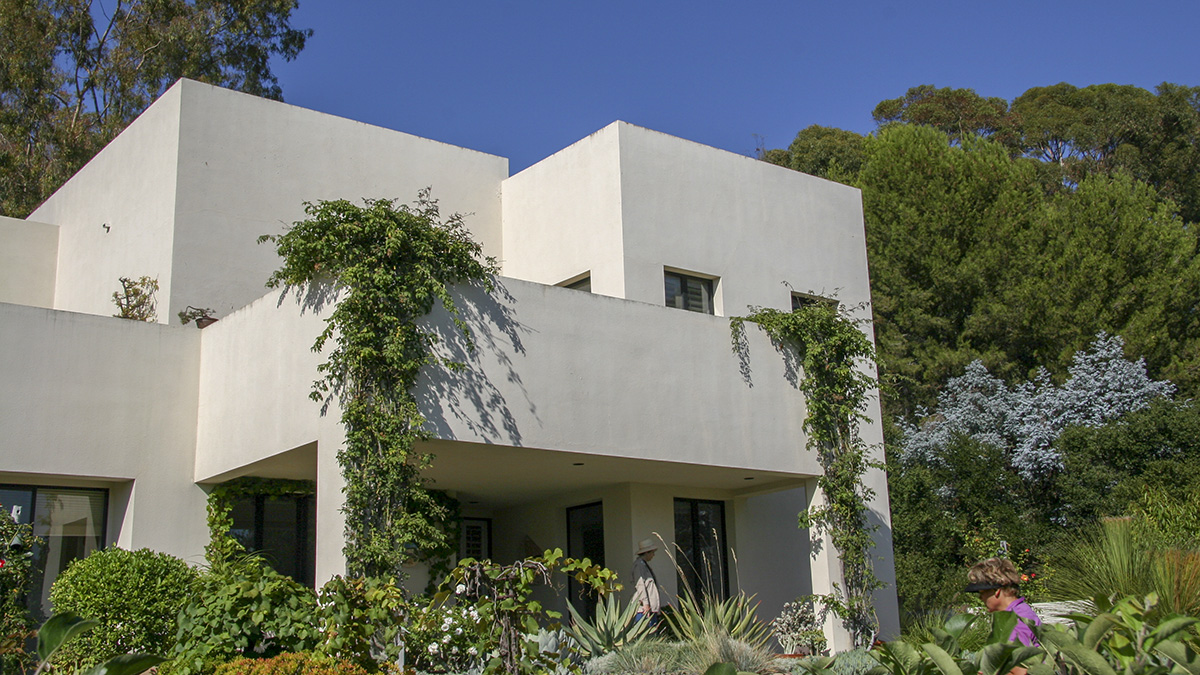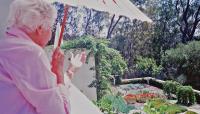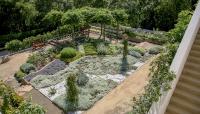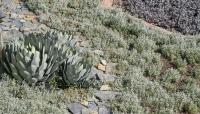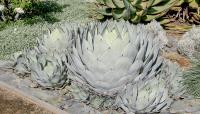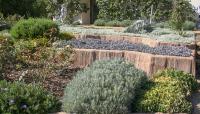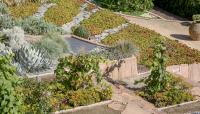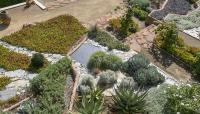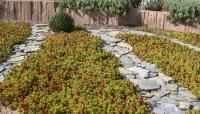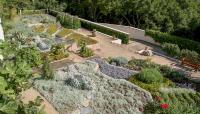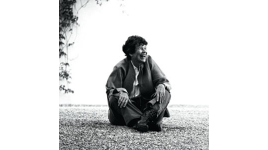Designed for the private residence of Carol Valentine in 1982 by Isabelle Greene, the two-acre garden is filled with symbolism and color while also being environmentally conscious of the semiarid, drought-prone California climate. Greene used naturally drought-tolerant, native plants and permeable surfaces, and while most of the plantings require no man-made irrigation, the few that do are grouped together to minimize water usage. In contrast to the traditional use of trimmed hedges and conventional flowers to define spaces, the focus of the Valentine Garden is on the textures and colors of the plantings and their terraced enclosures. Silver and blue tones are abundant in the numerous planted terraces because they are both native to the California landscape and naturally retain water due to their ability to reflect harsh sunlight. The terraces themselves have the appearance of being molded from the native brown-orange dirt and form miniature hillsides evocative of rice paddies in various East Asian countries. The landscape must be seen from above, in the way one views the ground from an airplane, to be fully appreciated.
The structure and form of the garden also defied convention, as abstruse lines configure well-proportioned spaces. To maximize the impact of the small space, Greene designed more than a dozen terraces on the south-facing slope of the Modernist, Spanish-influenced house, which are filled with spiky agaves and aloes, blue succulents, and an abundance of groundcovers. Entwined among the plantings are stones that represent a flowing stream descending through the terraces. The garden appeared in Pacific Horticulture in 1984 and has since been widely published.




